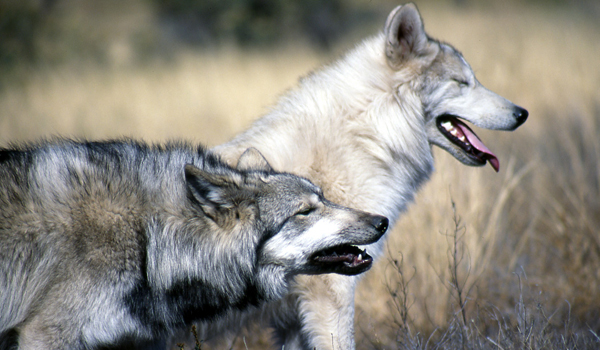How Did Dogs Get to Be Dogs?

The origin of man's best friend has been a source of wonder and heated debate for centuries.
Even Charles Darwin was unsure whether the dog's true ancestry could be determined, because dog breeds vary so greatly. In fact, the domestic dog is far more variable in size, shape and behavior than any other living mammal, according to James Serpell, professor at the University of Pennsylvania School of Veterinary Medicine and editor of "The Domestic Dog: Its Evolution, Behaviour, and Interactions With People" (Cambridge University Press, 1995).
There are many theories on how dogs evolved as a species, including the view that they are mixed descendants of two or more wild species, such as wolves, dingoes and jackals. But newer evidence hasn't supported that theory.
"Nowadays, based on a growing body of anatomical, genetic, and behavioral evidence, most experts believe that the dog originated exclusively from a single species: the gray wolf, Canis lupus," Serpell told Life's Little Mysteries.
The similarities between wolves and dogs are great. In the 1960s, ethologist John Paul Scott tried to untangle the behaviors of these two species, and created a catalog of 90 behaviors of dogs. All but 19 of them, however, were also observed in wolves, and the missing behaviors tended to be minor activities that probably had not been recorded at the time but do occur in wolves, Serpell said.
"Recent anatomical and molecular evidence has confirmed that wolves, dogs and dingoes are all more closely related to each other than they are to any other member of the family Canidae," Serpell said.
The oldest skeletal remains of probable domestic wolf-dogs were excavated from the Upper Paleolithic site of Eliseyevichi in western Russia, close to the Ukrainian border, and date as far back as 19,000 years. Two skulls resembled those of Siberian huskies in their general shape, according to Serpell.
Sign up for the Live Science daily newsletter now
Get the world’s most fascinating discoveries delivered straight to your inbox.
Loyal companions
Bones of ancient domestic wolf-dogs also have been found in central Europe, the Near East and North America, where they appear to have been deliberately buried with their human companions or in separate graves.
The 14,000-year-old remains of a puppy and an elderly person were found buried together in Israel, Serpell said. The person's left hand was apparently positioned so that it rested on the dog's flank, which shows that the relationship between man and dog is one of the oldest and most durable of friendships, he said.
So what allows for dogs to get along with humans so well?
"Several biological and behavioral factors predisposed dogs to fit easily within human groups," said Leslie Irvine of the University of Colorado at Boulder. "They have a long primary socialization period during which they can become closely bonded with humans."
Dogs are active during the same hours as their owners, as opposed to nocturnal animals, said Irvine, author of "If You Tame Me: Understanding Our Connection With Animals" (Temple University Press, 2004). Their loyal and obedient behavior allows them to be house-trained and to be taught to behave in return for little more than a treat and a pat on the head.
In fact, a domestic dog considers its owner or owners to be its "pack," and the owners' home to be its territory, according to "Simon & Schuster's Guide to Dogs" (Fireside, 1980).
"If a reciprocal understanding and affection have grown up between man and dog, it is because the domestication of the dog took place through an agreement on work and the division of food and lodging," according to "Simon & Schuster's Guide to Dogs." "This resulted in an affectionate and intelligent cooperation and the integration of the dog into human society."
- What are dog years?
- Why are Dalmatians the official firehouse dogs?
- 'Grrrr' means many things in dog speak
This article was provided by LifesLittleMysteries, a sister site to LiveScience.









